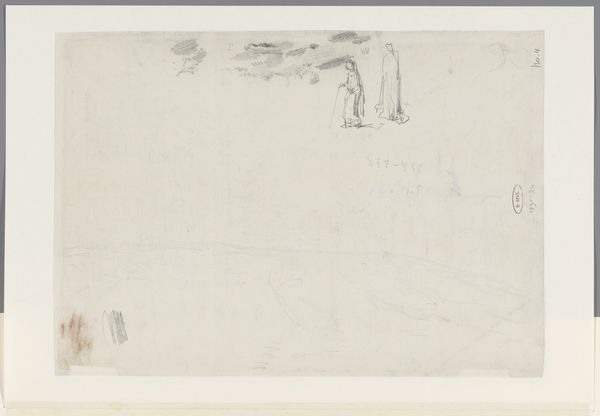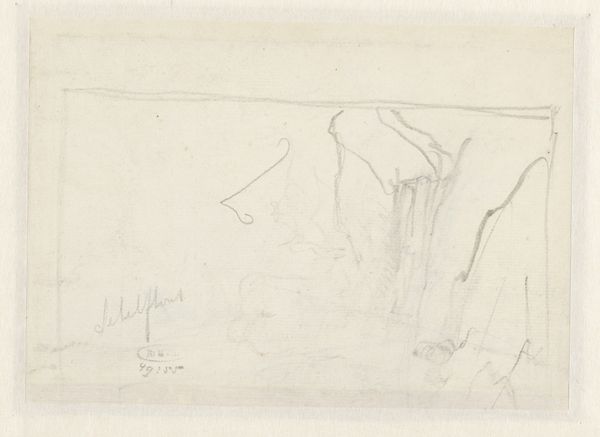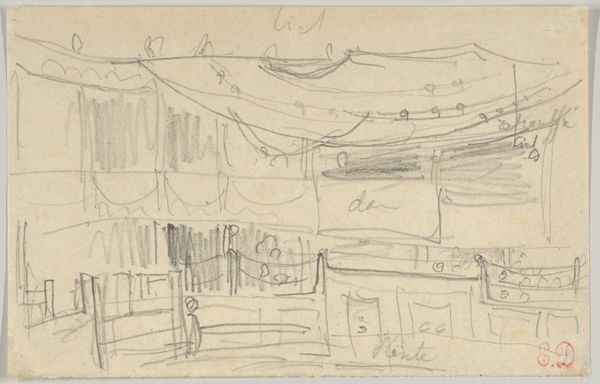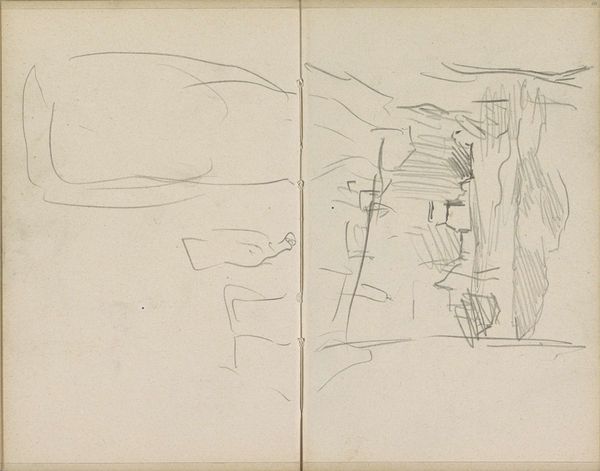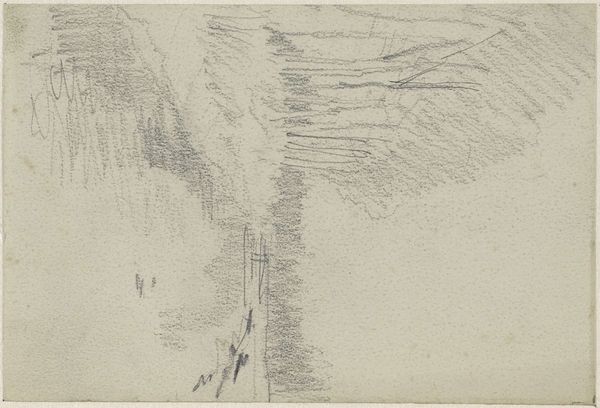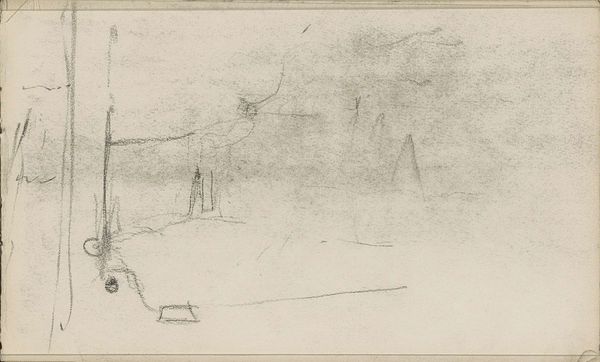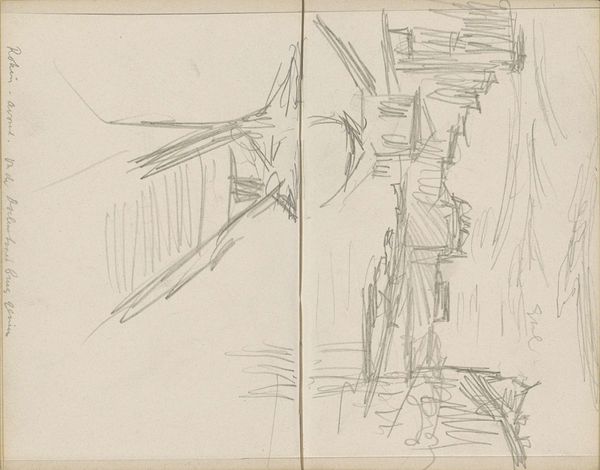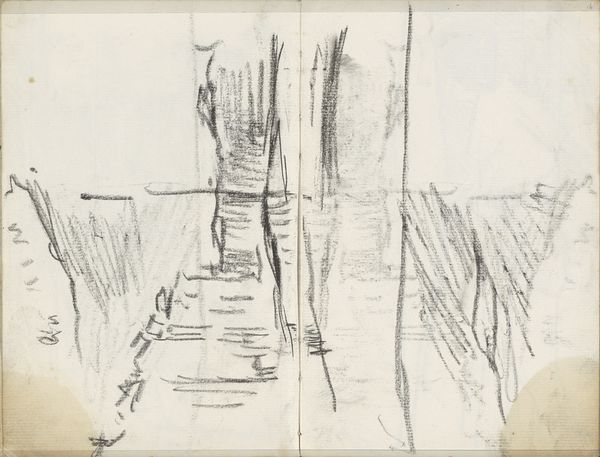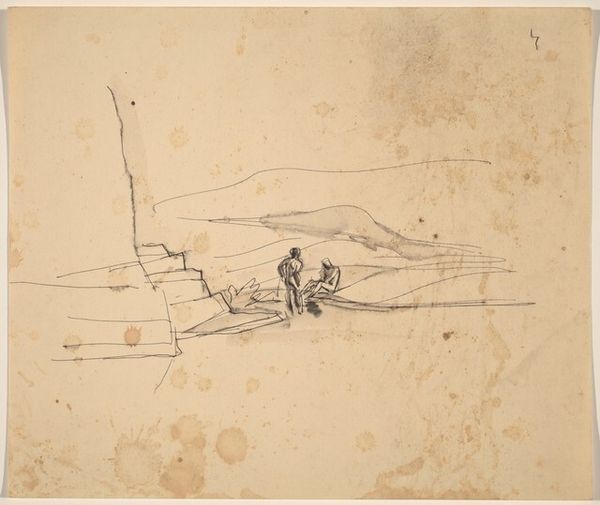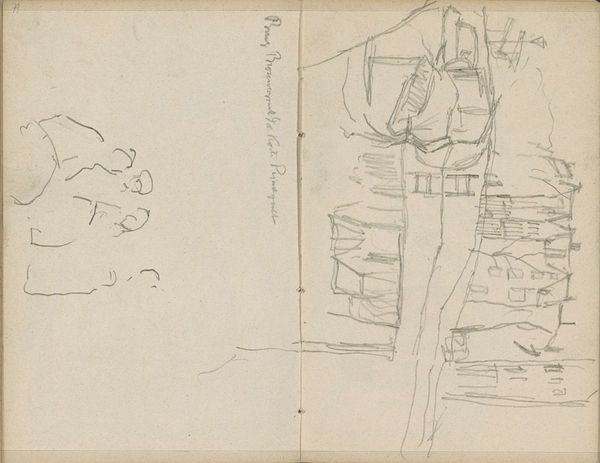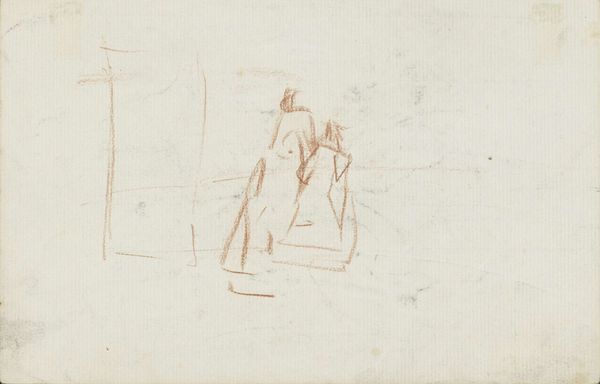
drawing, pencil
#
drawing
#
impressionism
#
landscape
#
figuration
#
pencil
Dimensions: height 226 mm, width 335 mm
Copyright: Rijks Museum: Open Domain
Editor: So, this is "Enkele personen bij een gebouw (doorgestreept)" by Isaac Israels, made around 1888. It's a pencil drawing, currently held at the Rijksmuseum. The sketchiness creates a real sense of transience, almost like we're seeing a fleeting moment captured in graphite. What do you make of it? Curator: What strikes me immediately is the material reality of the production of this drawing. Israels used pencil, a readily available and relatively inexpensive medium, allowing for quick, on-the-spot documentation. The "doorgestreept" in the title—crossed out—suggests a process of revision and editing, a fascinating glimpse into the artist's working methods. Notice also how the blank space of the paper functions almost as a material in itself, defining the figures and the scene as much as the graphite lines. Editor: That's a good point. It does feel quite raw, almost unfinished. How does this relate to the artistic context of the time? Curator: Consider the late 19th century's increasing industrialization. Pencil, as a mass-produced object, democratized drawing, making it accessible to a wider range of people. Israels, as an Impressionist, was capturing everyday life, depicting laborers and ordinary people. The seemingly simple act of sketching these figures is a commentary on the value of labor, rendered with the most basic and accessible of tools. We could see it as a challenge to traditional, academic painting. Editor: So, the very act of using a pencil becomes almost a political statement? Curator: Precisely! It’s about collapsing the hierarchy between "high art" and the art of the everyday, made possible by accessible materials and techniques. Look at the composition itself; the building feels almost skeletal. The human figures, rendered with the same unassuming material, gain prominence and speak to human impact and the experience of observing our constructed world. Editor: That's a really interesting perspective. I hadn't thought about the implications of the materials themselves. I'll definitely be looking at drawings differently now. Curator: Excellent! It is rewarding to think of how much we reveal when considering how artists make their art and interact with our cultures.
Comments
No comments
Be the first to comment and join the conversation on the ultimate creative platform.
